There are a ton of good “budget” scopes in the 1-4X magnification range available for right around the $300 mark. So at $575 (street price) the Atibal Velocity Free-Floating Crosshair FFP might seem wildly overpriced. But that’s not what Atibal sees as their competition. The new company is trying to punch above their weight here, going up against rivlas like the Vortex Razor HD II which runs north of a grand. If they can give scopes like that a run for their money, they have a real shot at making a name for themselves in the optics market. It looks like the new company’s off to a good start . . .
I’m a huge fan of variable scopes in the 1-4x range. Their small form factor is perfect for guns of all sizes and their zoom range is ideal for both hunting and competition shooting in 90% of the situations in which you’re likely to find yourself. Especially here in central Texas you’d be hard-pressed to find anywhere you really need much more than 4x magnification to take a good clean shot at a deer. But besides the magnification, the first thing I noticed about the Velocity was the reticle.
Atibal went with a first focal plane (FFP) design, meaning that the reticle stays the same size relative to the target no matter how far you zoom in. That’s ideal for reticles with precise substentions for ranging targets and holding for wind and distance corrections, like the Horus reticle or even a standard MIL-Dot reticle. The difference here is that the Velocity uses a minimalist reticle design — just a fine set of crosshairs in the middle, flanked by what’s basically a German style reticle.
I’m of two minds on this. On the one hand, the design is simple with plenty of white space to observe your target yet enough markings to quickly allow your eye to find the center crosshair line up your shot. The center crosshair is optionally illuminated as well, making it easy to find in low light situations. There’s a sort of zen-like simplicity to it.
On the other hand, this isn’t a $300 scope. Nearly everything else on the market at this level has some sort of BDC reticle or MIL-based substention, even if it’s only an optional feature. Being new, Atibal only offers one version of each scope with no reticle alternatives so for now what you see is what you get.
The Velocity’s fit and finish are where they should be. The tube’s made from aircraft grade aluminum, but the moving parts are finished in plastic. Atibal touts that the magnification mechanism is a proprietary design that keeps everything from moving around under recoil. Moving the magnification ring feels satisfyingly solid without too much resistance.
The turrets on the scope are covered to keep from accidentally turning them. That’s a plus because I’ve turned my un-capped turrets before. On the minus side, the Velocity’s turrets are configured in 1/2 MoA increments. The means the best you can dial in your zero is within 1/2-inch at 100 yards. As someone who loves to fine tune their rifle’s zero as closely as possible, that can be slightly infuriating. You can be 1/4-inch off center and not be able to do anything about it.
The lack of a ballistic reticle would usually mean that the turrets are specially designed to allow the shooter to dial for windage and elevation, but in this case it isn’t all that easy. The numbers on the Velocity’s turrets are small and somewhat difficult to see which can make adjusting them on the fly problematic.
The optical clarity is very good, and the reticle looks great even when illuminated (with no bleed from around the reticle itself). There is a little bit of color bleed from the sides when turned up all the way and zoomed all the way out, but if you tone down the illumination level a touch that goes away.
I slapped the Velocity on a SCAR 17, a rifle known for its scope-destroying ability. After a quick zero I ran a few hundred rounds of .308 Winchester through the gun, then performed a standard “box test” where the scope is clicked 10 notches in each direction until it returns back to the original position. The rounds impacted in exactly the same location as when I zeroed it. Perfect.
So, what’s the verdict? There are a few rough spots for this first offering from a new company, but there aren’t any dealbreakers. The Atibal Velocity is a definite step up from the offerings in the $300 range. What we have here is a very well built scope with great specs that compares favorably to optics selling for twice the price.
Specifications: Atibal Velocity 1-4x FFP Riflescope
- Magnification: 1-4x
- Twilight Factor: 4.9-9.8
- Objective Lens Diameter: 24mm
- Eye Relief: 4.8 inches
- Field of View: 27.5-63 feet / 100 meters
- Tube Size: 30 mm
- Turret Style: Low Cap
- Adjustment Per Click: 1/2 MOA
- Max Elevation Adjustment: 120 MOA
- Max Windage Adjustment: 120 MOA
- Weight: 18 ounces with no mount
- Length: 10.25 inches
- Made of 6061-T6 aircraft grade aluminum
- MSRP: $639.99
Ratings (out of five stars):
Glass Quality * * * *
It’s not a Swarovski, but for $600 it’s damned good.
Reticle * *
If they had another BDC or MIL-based option I’d be happier, especially at this price point. With this one, it feels like a waste of a first focal plane scope.
Turrets * * *
Solid and repeatable with clean adjustment clicks. I’d prefer 1/4 MoA increments and the numbers could be larger and easier to read.
Overall * * * *
The Velocity is a great step up from a Burris or a Redfield. The large field of view and great mechanics makes this every bit as functional as the bigger players’ offerings but at a much lower price point. A fine functioning scope that won’t break the bank.

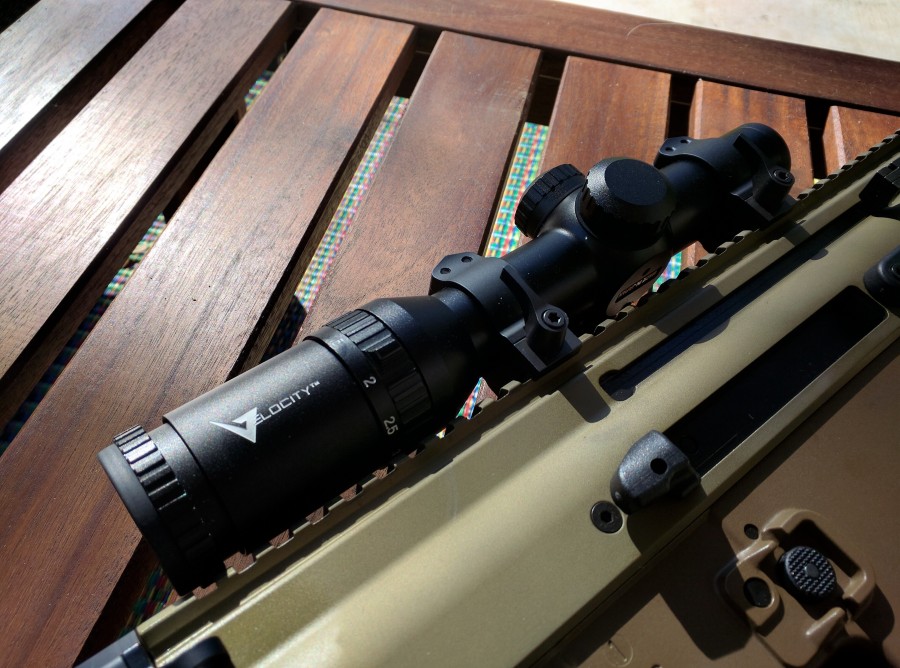
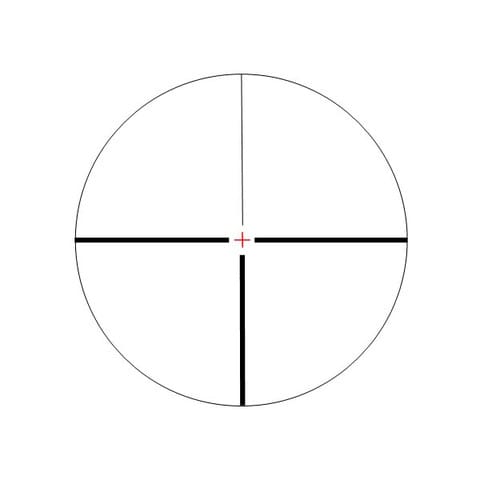
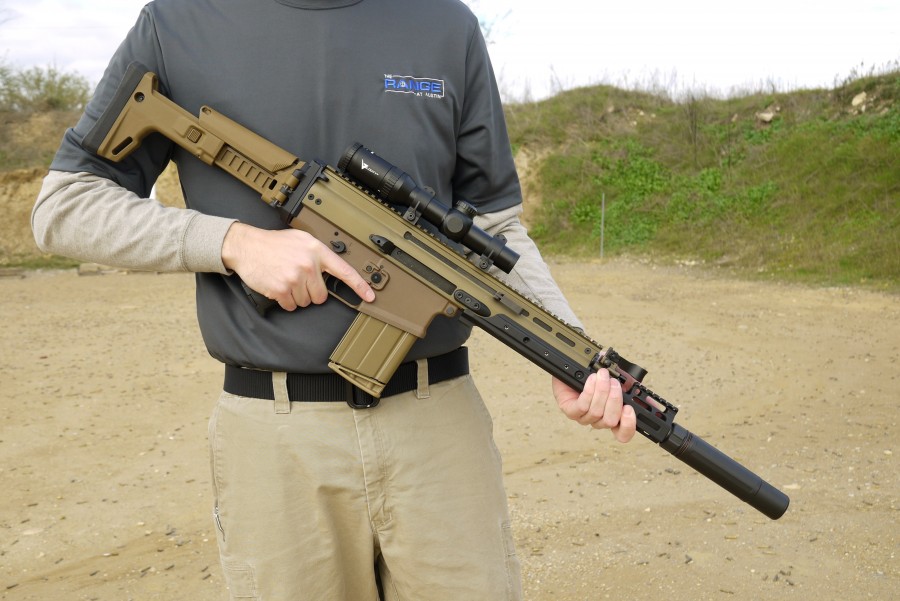
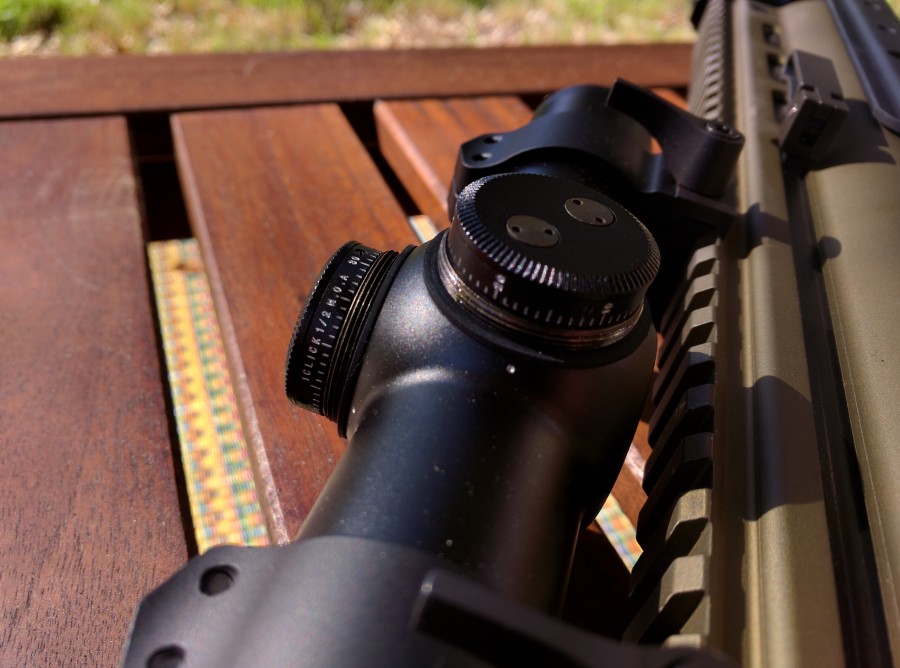
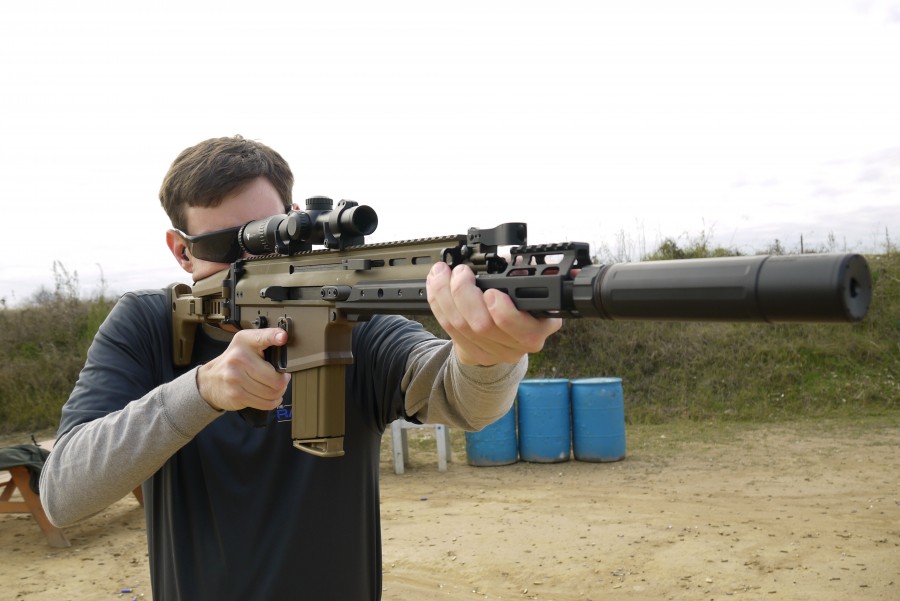
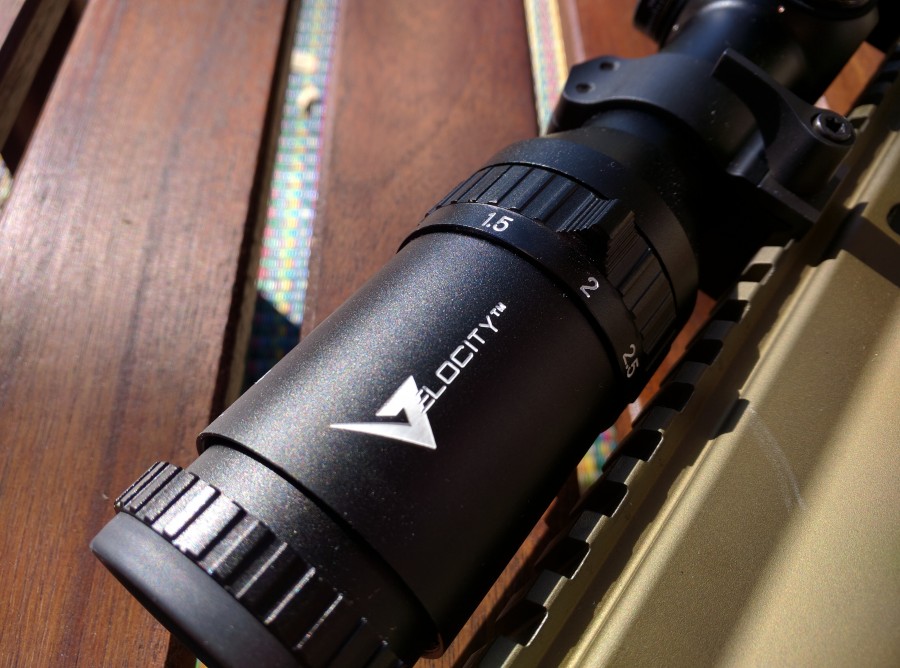
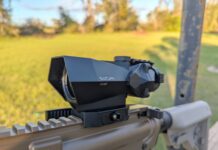


very low rings? What is the mounting?
Just a set of low 30mm rings from Warne.
Thank you sir, they look very low to me in the pic, very good height for that scope / SCAR.
First Focal Plane on a crosshair reticle with no subtensions? No BDC? WTF is the point? That’s the worst of both worlds. With so many great 1-4x options out there, this one has a junk reticle and nothing special or different to offer.
The best bang for your buck out there is the SWFA followed by Vortex.
+.75
You only agree with 3/4’s of a whole?
I want a clean, simple reticle. I would pay more to get rid of the BDC clutter.
Where is it made?
Japan.
How does one type out a wet fart to describe my feelings on this optic and it’s unchangeable combination of “features”?
Fthhbhptbt…
*Sigh of Relief*
Nick – I didn’t think that was you in the first pic. You’ve lost some weight. Good for you.
I like the Burris MTAC CQB reticle better. East to quire and does have calculation built in.
What is the country of origin? (Paying for R&D for the Chicom PLA is not on my agenda)
Atibal is very loud about the fact that their glass is Japanese.
deleted by me.
Looks similar to the Millett Tactical DMS-1 in 1-4×24. I think Atibal priced themselves too high with this one.
For me the main issue with these lower end 1-4x/1-6x is the quality of the 1x. Can it really perform like a true red dot? Otherwise, not much point for me. I’d have loved some comment in the review about how “true” the zero magnification setting is.
Most 1xs are closer to 1.25, and even if they are 1x, there is distortion around the edges. The closest I have seen to a true 1x outside of a red dot is the Elcan SpecterDR 1x/4x.
One thing about scope reviews that gets under my skin is the lack of through the scope pics, so optical quality can be shown. As they say, a picture is worth a thousand words.
How does the glass compare to something like the Trijicon Accuscope 1-4x? I bought one of those on sale for only a little more than this scope from Optics planet.
Only reason I looked at this article was to find out WTF was a “free-floating reticle”, and I have not seen an answer. I understand FFP, but have never heard of free floating. Floating in what? Free from what? Is this nonsense talk, or what?
I had the same question.
I’m pretty sure it refers to the red + that “floats” in the middle.
Not only the glass but the entire optic is made in Japan. Thanks
Always makes me happy to see Nick shooting a suppressed rifle. Unfortunately I don’t really care for the scope, at this price point I would rather be shooting SWFA
FFP feels like it’s completely wasted on this reticle (and, really, on this magnification even with a BDC reticle – for 1-4x, you will either run it at 1x or at 4x, and you’ll do the later exclusively if you’re shooting at any distance that requires BDC use). And yet I’d wager that it adds considerably to the price.
Here’s an example of a budget FFP scope ($280!) with a useful BDC reticle and magnification:
http://www.primaryarms.com/primary-arms-4-14×44-ffp-scope-with-patented-acss-hud-dmr-308223-reticle/p/kt-pa4-14xffp308/
+ 1. I’m not sure of the value of FFP on a 1-4x in the first place – and I’m complete sure that it has no value to me with no sub-tensions or BDC. Am I missing something? What’s the point?
The Velocity 1-4x with the free floating crosshair was specifically designed for the AR platform for CQB and short to medium distances. The free floating crosshair allows the shooter to quickly identify their target instead looking into a cluttered reticle with a BDC’s or sub-tensions (some companies over do it) that may make it difficult in quickly acquiring your target. The thick posts at 3, 6, and 9 o’clock quickly brings your eye to the target. This reticle was specifically designed this way on purpose for fast target acquisition. The reticle is very similar to the NightForce NXS 1-4x with the IHR reticle. Here is the description NightForce:
“IHR stands for International Hunting Reticle, with good reason. It’s uncluttered and lightning fast, equally effective on dangerous game in tight quarters and at longer ranges on smaller targets. A floating illuminated center crosshair provides simple hold off capability. 3, 6 and 9 o’clock posts bring the eye quickly to your target.” http://nightforceoptics.com/nxs/1-4×24
Hopefully, that clears up on why a free floating crosshair was used and what it’s intended purposes are.
BTW a cheaper Chinese optic will not compare to the glass and quality of a Japanese optic. Many NightForce optics are Japanese manufactured just like our Velocity. The NightForce 1-4 that uses a IHR reticle (free floating) does not mean a Chinese optic is better because it has a BDC. Atibal will be coming out with a 1-4 with a BDC calibrated for 5.56 and .308 that will be Chinese manufactured for around $220 but we will never say it’s better than a Japan optic because it has a BDC.
Also here is a couple in depth review from The New Rifleman:
http://www.thenewrifleman.com/the-atibal-velocity-review/
http://www.thenewrifleman.com/atibal-velocity-1-4x-lets-compare-it-to-the-razor-hd-ii/
If you have any questions don’t hesitate to email me. Thanks.
Comments are closed.